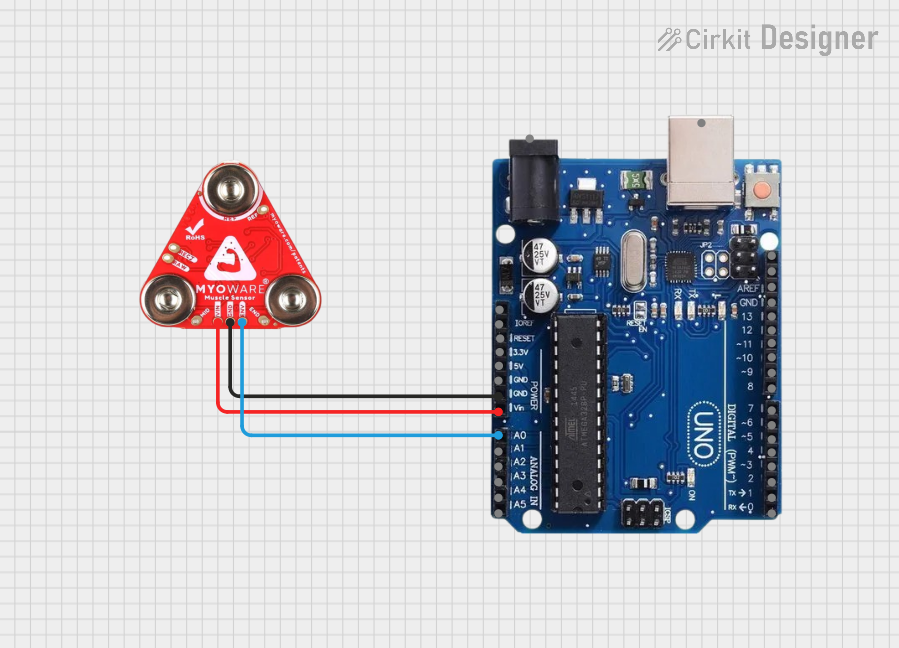
Arduino Uno R3 and Myoware Muscle Sensor Interface

Circuit Documentation
Summary of the Circuit
This circuit consists of an Arduino Uno R3 microcontroller board interfaced with a Myoware 2.0 Muscle Sensor. The Arduino Uno R3 is responsible for controlling the circuit and processing the signals from the muscle sensor. The Myoware Muscle Sensor is used to measure the electrical activity of muscles, which can be read by the Arduino through one of its analog input pins. The sensor's output is connected to the Arduino's analog input for signal processing and potential use in applications such as prosthetics, game controllers, or health devices.
Component List
Arduino Uno R3
- Description: A microcontroller board based on the ATmega328P. It has 14 digital input/output pins, 6 analog inputs, a USB connection, a power jack, an ICSP header, and a reset button.
- Purpose: Acts as the central processing unit of the circuit, reading sensor data and executing embedded code to perform tasks.
Myoware 2.0 Muscle Sensor
- Description: A sensor that measures muscle activity by detecting the voltage generated when muscles contract.
- Purpose: Provides muscle activity data to the Arduino for analysis and processing.
Wiring Details
Arduino Uno R3
- VIN: Connected to the VIN of the Myoware 2.0 Muscle Sensor to provide power.
- GND: Connected to the GND of the Myoware 2.0 Muscle Sensor to complete the circuit's power loop.
- A0: Receives the analog ENV signal from the Myoware 2.0 Muscle Sensor for processing.
Myoware 2.0 Muscle Sensor
- VIN: Receives power from the VIN pin of the Arduino Uno R3.
- GND: Connected to the GND pin of the Arduino Uno R3 to complete the circuit's power loop.
- ENV: Outputs the muscle activity signal to the A0 pin of the Arduino Uno R3.
Documented Code
No code has been provided for the microcontrollers in the circuit. To fully utilize the circuit, embedded code for the Arduino Uno R3 should be written and uploaded using the Arduino IDE or a similar development environment. The code should initialize the analog input pin connected to the Myoware Muscle Sensor and read its values, possibly converting them to a human-readable form or using them as input for further processing or control applications.